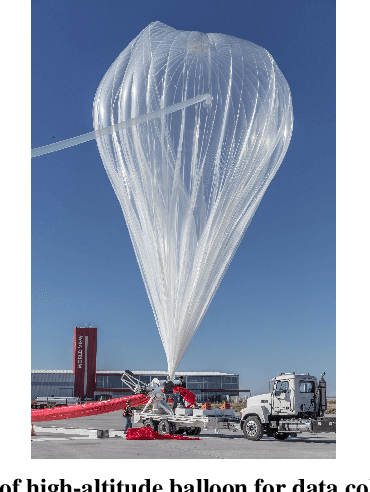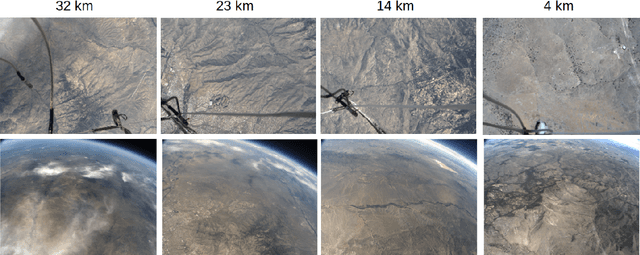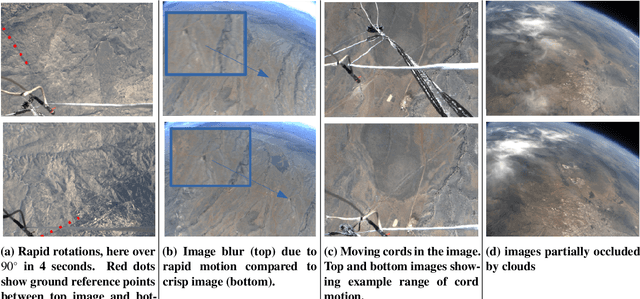Brett Streetman
Model Predictive Planning: Towards Real-Time Multi-Trajectory Planning Around Obstacles
Sep 27, 2023



Abstract:This paper presents a motion planning scheme we call Model Predictive Planning (MPP), designed to optimize trajectories through obstacle-laden environments. The approach involves path planning, trajectory refinement through the solution of a quadratic program, and real-time selection of optimal trajectories. The paper highlights three technical innovations: a raytracing-based path-to-trajectory refinement, the integration of this technique with a multi-path planner to overcome difficulties due to local minima, and a method to achieve timescale separation in trajectory optimization. The scheme is demonstrated through simulations on a 2D longitudinal aircraft model and shows strong obstacle avoidance performance.
Vision-Based Terrain Relative Navigation on High-Altitude Balloon and Sub-Orbital Rocket
Feb 16, 2023



Abstract:We present an experimental analysis on the use of a camera-based approach for high-altitude navigation by associating mapped landmarks from a satellite image database to camera images, and by leveraging inertial sensors between camera frames. We evaluate performance of both a sideways-tilted and downward-facing camera on data collected from a World View Enterprises high-altitude balloon with data beginning at an altitude of 33 km and descending to near ground level (4.5 km) with 1.5 hours of flight time. We demonstrate less than 290 meters of average position error over a trajectory of more than 150 kilometers. In addition to showing performance across a range of altitudes, we also demonstrate the robustness of the Terrain Relative Navigation (TRN) method to rapid rotations of the balloon, in some cases exceeding 20 degrees per second, and to camera obstructions caused by both cloud coverage and cords swaying underneath the balloon. Additionally, we evaluate performance on data collected by two cameras inside the capsule of Blue Origin's New Shepard rocket on payload flight NS-23, traveling at speeds up to 880 km/hr, and demonstrate less than 55 meters of average position error.
* Published in 2023 AIAA SciTech
 Add to Chrome
Add to Chrome Add to Firefox
Add to Firefox Add to Edge
Add to Edge